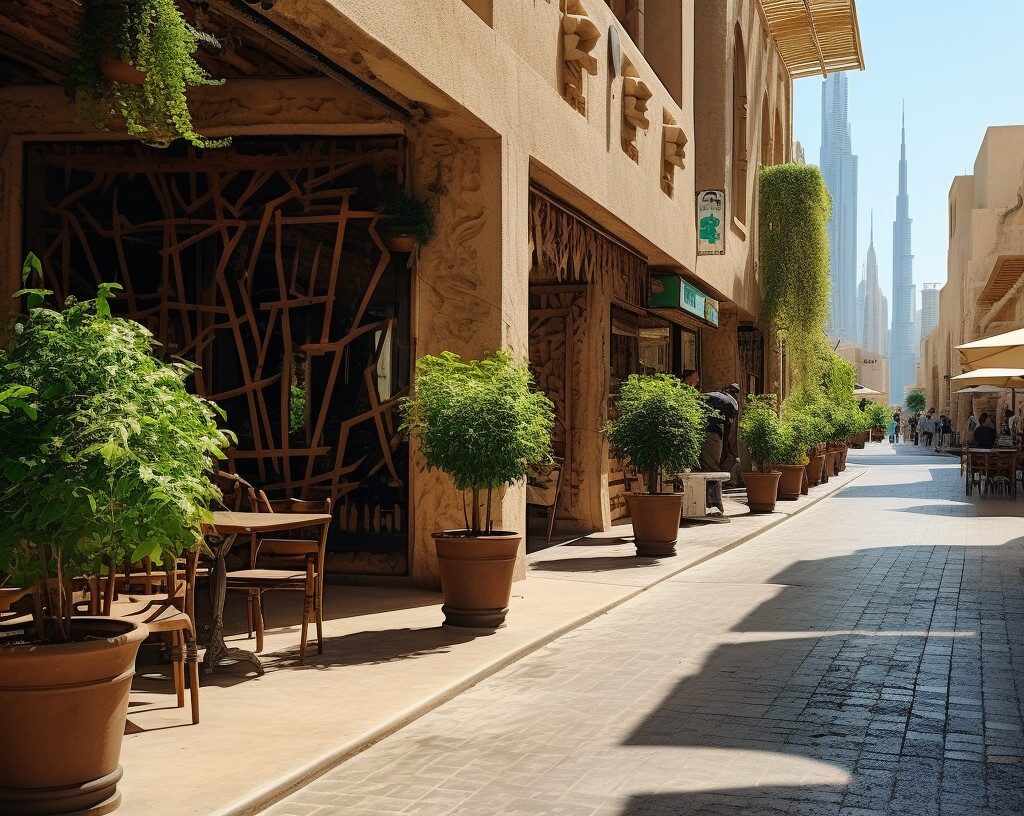Introduction
In the heart of the Arabian Desert, Dubai stands as a shining example of urban management excellence. This city has transformed from a modest trading port to a bustling global metropolis. This transformation, a testament to visionary leadership and strategic urban planning, is not just about the towering skyscrapers and luxurious lifestyle but the meticulous orchestration of urban development. Dubai’s journey offers insights into effective urban management strategies that have enabled it to address the challenges of rapid growth while maintaining a high quality of life for its residents. This article delves into the core of Dubai’s urban management strategies, unraveling the policies, initiatives, and innovations that have shaped its urban landscape.

Historical Context of Urban Planning in Dubai
Understanding Dubai’s urban management strategies requires looking back at its historical evolution.
Evolution of Urban Planning from the Early Days to the Present: Dubai’s urban planning journey began long before transforming into a global hub. Initially centered around Dubai Creek, the city’s early urban planning focused on accommodating trade and pearling industries. As oil was discovered and the economy diversified, urban planning evolved to meet the demands of a rapidly growing population and an expanding economy.
Key Milestones in Dubai’s Urban Development: Significant milestones in Dubai’s urban development include creating the first master plan in the 1960s, which laid the groundwork for future expansion. Subsequent plans, such as the Dubai 2020 Urban Master Plan, have continued to guide the city’s growth, focusing on sustainability, connectivity, and quality of life.
Governmental Framework and Policies
The role of government in shaping Dubai’s urban landscape cannot be overstated.
Role of Government in Urban Management: The government of Dubai has played a pivotal role in urban planning and management. Various government bodies and authorities, such as the Dubai Municipality and the Dubai Land Department, have implemented policies and regulations to guide the city’s development.
Overview of Key Policies and Regulations Shaping Dubai’s Urban Landscape: Policies such as the Dubai Plan 2021 have been instrumental in shaping the city’s urban landscape. This plan focuses on making Dubai an innovative and sustainable city, enhancing the quality of life for residents, and fostering a competitive economy. Regulations regarding building codes, land use, and environmental sustainability have also been crucial in managing urban growth.
Infrastructure Development
Infrastructure is the backbone of any city, and Dubai’s approach to infrastructure development has been a critical factor in its successful urban management.
Strategies for Infrastructure Planning and Development: Dubai’s infrastructure development strategies have focused on creating a robust and efficient system that supports the city’s growth. This includes developing world-class transportation systems, such as the Dubai Metro and extensive road networks, as well as state-of-the-art utilities and telecommunications infrastructure.
Case Studies of Successful Infrastructure Projects: Notable infrastructure projects in Dubai include the Al Maktoum International Airport, set to become the world’s largest airport, and the Mohammed Bin Rashid Al Maktoum Solar Park, part of Dubai’s commitment to renewable energy. These projects exemplify Dubai’s approach to infrastructure development – ambitious, forward-thinking, and aligned with the city’s overall urban management goals.
Sustainable Urban Development
In recent years, Dubai has significantly emphasized sustainable development, recognizing the need to balance rapid urban growth with environmental stewardship.
Initiatives for Sustainable and Environmentally Friendly Urban Growth: Dubai’s commitment to sustainability is evident in its numerous green initiatives. The city has implemented stringent building regulations to promote energy efficiency, water conservation, and sustainable materials. The Dubai Green Building Regulations and Specifications, for instance, mandate eco-friendly practices in construction.

Identifying Key Challenges in Managing a Rapidly Growing City: One of the primary challenges in Dubai’s urban management is balancing rapid development with sustainability. Other challenges include managing traffic congestion, ensuring affordable housing, and maintaining a high quality of urban life.
Innovative Solutions and Strategies Implemented in Dubai: Dubai has implemented various innovative solutions to address these challenges. For instance, the city’s traffic management system uses innovative technology to optimize traffic flow and reduce congestion. Affordable housing initiatives have been introduced to ensure all residents can access quality housing options.
